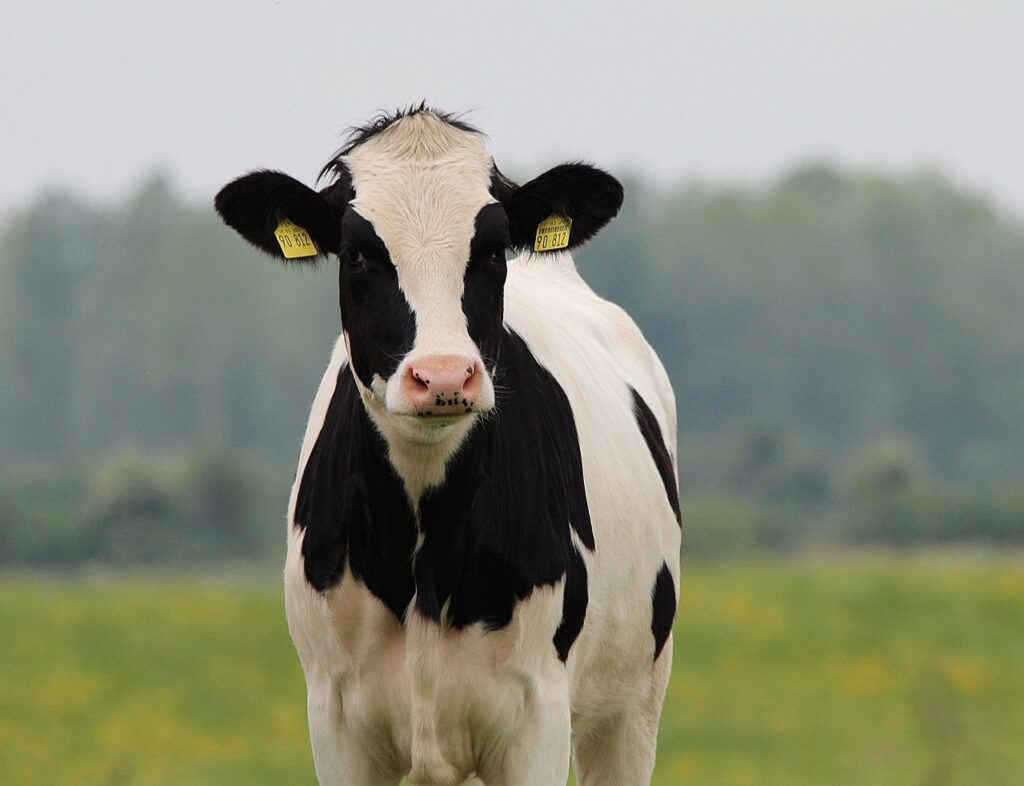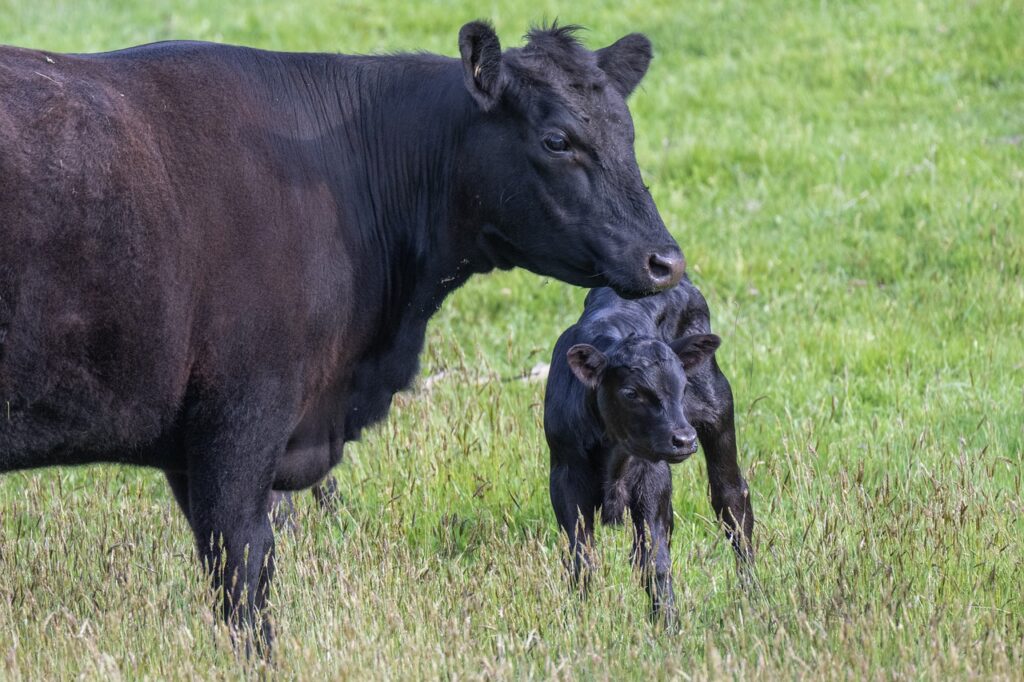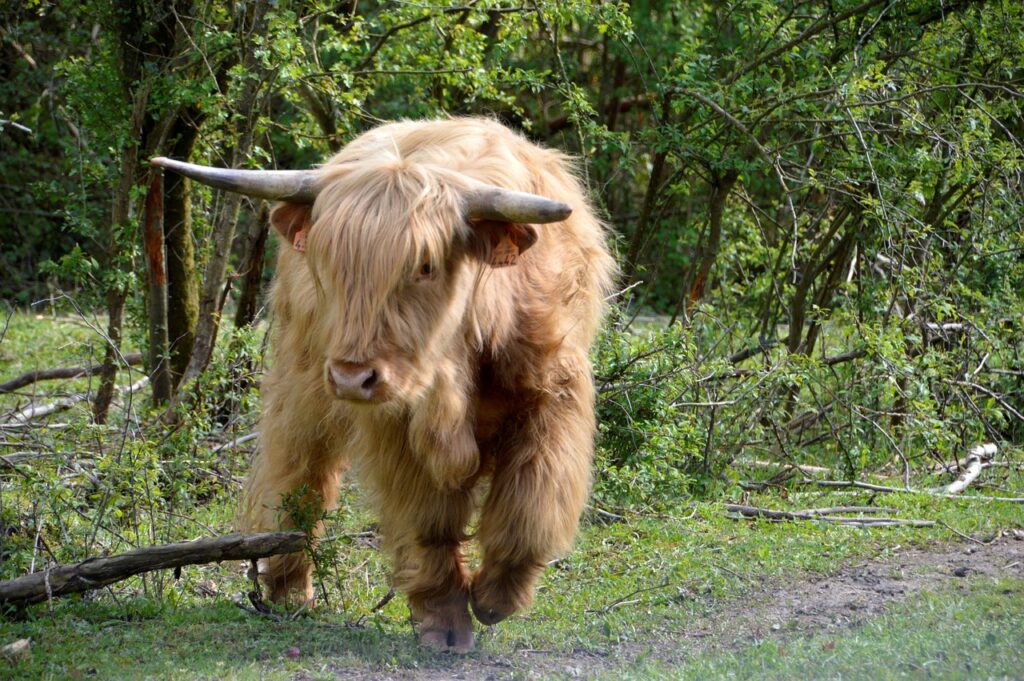In general, the best cow breeds for a homestead are Jersey, Guernsey, Dexter, Hereford, and Scottish Highland.

Jersey Cows
Jerseys are a smaller breed of cow that are known for their high-quality milk production. They are docile and easy to handle, making them a good choice for small-scale milk production on a homestead.
Guernsey Cows
Guernseys are another smaller breed of cow that are known for their high butterfat content in their milk. They are also well-suited for grazing on pasture and are adaptable to different climates.
Dexter Cows
Dexters are a small and hardy breed of cow that are well-suited for small-scale homesteading. They produce high-quality milk and meat, and can thrive on a diet of grass and hay.
Hereford Cows
Herefords are a larger breed of cow that are well-suited for meat production on a homestead. They are hardy and adaptable to different climates, and can graze on pasture or eat hay during the winter.
Scottish Highland Cows
Scottish Highlands are a hardy breed of cow that are well-suited for grazing on rough terrain and in cold climates. They produce high-quality meat and can also be used for milk production.
What Are The Best Dairy Cow Breeds?

There are several dairy cow breeds that are popular for their high milk production and milk quality. On a homestead, a single dairy cow can provide for a family of four, depending on their dairy consumption. The following cow breeds are high milk producers.
- Holstein: Holsteins are the most common dairy cow breed and are known for their high milk production. They are large and docile, and can produce up to 9 gallons of milk per day.
- Jersey: Jerseys are a smaller breed of dairy cow that are known for their high butterfat content in their milk. They are docile and easy to handle, making them a good choice for small-scale milk production.
- Guernsey: Guernseys are another smaller breed of dairy cow that are known for their high butterfat content and rich, golden milk. They are adaptable to different climates and can thrive on a diet of grass and hay.
- Ayrshire: Ayrshires are a hardy breed of dairy cow that are known for their high milk production and adaptability to different environments. They produce milk with a medium butterfat content and are well-suited for grazing on pasture.
- Brown Swiss: Brown Swiss cows are a larger breed of dairy cow that are known for their high milk production and quality. They are hardy and adaptable to different climates, and produce milk with a high butterfat content.
When choosing a dairy cow breed, consider your goals for milk production, as well as the resources and climate of your area. Each breed has its own unique characteristics, so it’s important to choose a breed that is well-suited for your specific needs and management practices.
What Are The Best Meat Cow Breeds?

There are several cattle breeds that are popular for their meat quality and are commonly raised for beef production. In general, raising cattle for beef requires several head of cattle and a larger operation. However, small homesteads can raise their own beef by handling a couple cows or steers.
- Angus: Angus cattle are one of the most popular beef cattle breeds, known for their high-quality meat with good marbling and flavor. They are adaptable to different environments and are easy to handle.
- Hereford: Hereford cattle are known for their docile temperament and hardiness. They produce high-quality beef with good marbling and flavor, and are well-suited for grazing on pasture.
- Simmental: Simmental cattle are a larger breed of cattle that are known for their high meat yield and good quality beef. They have good maternal instincts and can adapt well to different environments.
- Charolais: Charolais cattle are a larger breed of cattle that are known for their fast growth and high meat yield. They produce lean beef with good muscle development and are well-suited for feedlot production.
- Limousin: Limousin cattle are a French breed of cattle that are known for their lean beef with good muscling and high yield. They are hardy and adaptable to different environments, and can produce beef with good marbling and flavor.
When choosing a meat cow breed, consider your goals for beef production, as well as the resources and climate of your area. For instance, in my personal experience, angus cattle have been great breeders and very gentle cattle.
Dual Purpose Cow Breeds

Dual-purpose cow breeds are cattle that are bred for both milk and beef production. For instance, these cattle may be raised for dairy for majority of their life, and brough to slaughter when wanted. However, older cattle do not produce as high of quality of meat as younger cattle.
- Brown Swiss: Brown Swiss cows are a large and hardy breed that are known for their high milk production and good beef quality. They produce milk with a high butterfat content and beef with good marbling and flavor.
- Ayrshire: Ayrshires are a hardy breed of cow that are known for their high milk production and good beef quality. They produce milk with a medium butterfat content and beef with good marbling and flavor.
- Milking Shorthorn: Milking Shorthorns are a versatile breed that are known for their high milk production and good beef quality. They have a docile temperament and are easy to handle, making them well-suited for small-scale homesteading.
- Dexter: Dexters are a smaller breed of cow that are well-suited for small-scale homesteading. They produce high-quality milk and meat, and are adaptable to a diet of grass and hay.
- Guernsey: Guernseys are a smaller breed of cow that are known for their high butterfat content in their milk and good beef quality. They are adaptable to different climates and can thrive on a diet of grass and hay.
Common Questions about Cow Breeds
What is the difference between purebred and crossbred cows?
In short, purebred cows are those that are bred from the same breed, while crossbred cows are those that are bred from two or more different breeds. Crossbreeding can improve performance traits such as milk production, fertility, and disease resistance.
Purebred cows are those that have been selectively bred within a specific breed for many generations, and their offspring will have predictable traits and characteristics. For instance, these cows have a known genetic background and can be traced back to a specific breed registry. Additionally, they tend to be more uniform in appearance and can be used for breeding to maintain the purity of the breed.
Crossbred cows, on the other hand, are the result of breeding two or more different purebred cow breeds. The offspring of a crossbred cow will inherit traits from both of its parent breeds, resulting in a unique combination of characteristics. In addition, crossbreeding can produce offspring with improved performance traits such as increased milk production, fertility, and disease resistance. Crossbreeding can also help to reduce the risk of inbreeding and increase hybrid vigor.
In general, purebred cows tend to be more consistent in their performance and are preferred in some situations where predictability and uniformity are important, such as in breed shows or purebred breeding programs. Crossbred cows, on the other hand, can offer a wider range of desirable traits and can be a good option for commercial livestock production where hybrid vigor and improved performance traits are sought after.
What are heritage cow breeds?
Heritage cow breeds are traditional breeds of cows that have been raised by farmers for many generations. These breeds have typically been bred for specific purposes, such as milk production, meat production, or draught work, and have adapted to local environments over time.
Heritage breeds have often been replaced by modern breeds that are selected for their higher productivity, and many heritage breeds are now rare and endangered. However, there has been a growing interest in preserving these breeds due to their unique characteristics, hardiness, and genetic diversity.
Examples of heritage cow breeds include:
- Ayrshire: Originally from Scotland, Ayrshire cows are known for their hardiness and adaptability to a range of climates. They are primarily raised for their milk, which is high in protein and butterfat.
- Devon: Devon cows are a hardy breed from southwestern England. They are known for their good temperament, hardiness, and adaptability to rough terrain. They are raised for both meat and milk production.
- Milking Shorthorn: This breed is known for its ability to produce high-quality milk with a rich flavor. They are also raised for beef production, as they are well-muscled and produce tender meat.
- Red Poll: This dual-purpose breed originated in England and is known for its good temperament, hardiness, and adaptability to a range of climates. They are raised for both meat and milk production.
- Guernsey: Guernsey cows are known for their golden-colored milk, which is high in butterfat and protein. They are also hardy and adaptable to a range of climates.
Preserving heritage breeds is important for maintaining genetic diversity and preserving unique traits that may be lost in modern breeds. For instance, many farmers and organizations are working to conserve and promote these breeds to ensure their continued existence.
Can different cow breeds be raised together?
In general, different cow breeds can be raised together. However, be sure to consider the different nutritional and management needs of each breed. For instance, some cattle need more food to keep on weight, or some cattle are better mothers than others. Additionally, temperament is different by cow breed and may require special care.

Continue Reading About Cows
Recent Posts
In general, to harvest your own seeds, you must choose mature, healthy plants, allow seeds to dry out, and remove the seeds when they are completely dry. However, this process will look different for...
A guide on how to store and organize seeds for your garden. Vegetables, flowers, herbs, or anything you are wanting to grow. How to Store Your Seeds Proper storage of garden seeds is essential...
